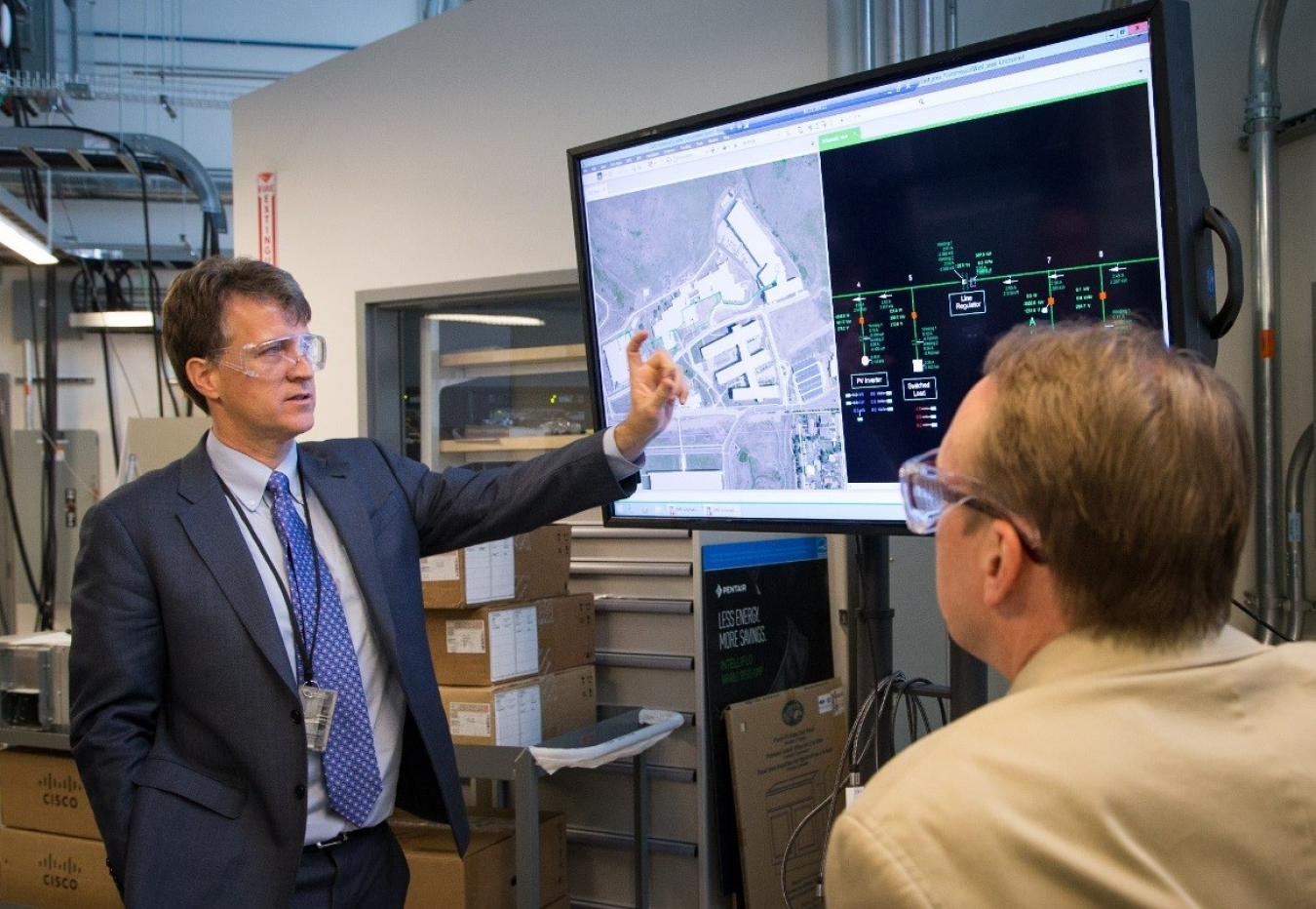GridUnity—formerly Qado Energy— set out to completely change the interconnection process with a cloud-connected tool that determines a solar pr...
May 3, 2017
Testing at the Energy Department’s National Renewable Energy Laboratory enables larger amounts of renewable energy on the nation’s electric grid.
Solar panels don’t immediately start delivering electricity to consumers or the grid once they’re installed—a utility must assess the system’s impact on the grid before it gives permission to flip the switch. These interconnection delays are a pain point for solar installers across the United States, and each day solar systems sit unconnected prolongs customers’ seeing benefits from their solar investment.
Since electricity generated from solar affects the grid, engineers and utilities are cautious when approving large-scale projects or projects in areas where there’s already a lot of solar. As a result, some utilities conduct in-depth, custom impact studies before approving a solar project, which can cause costly delays for both project developers and customers.
GridUnity (formerly Qado Energy) set out to change the interconnection process with a cloud-connected tool that determines a solar project’s impact on the grid. From early-stage concept development in 2012 through use-case modeling and basic-function testing in 2014, the Solar Energy Technology Office (SETO)’s Incubator program readied GridUnity’s technology for pilot opportunities with potential utility customers. The resulting energy-analytics platform can assess the grid impact of any distributed energy resource project, like solar or wind, at the distribution level.
To bring the platform to life, GridUnity collaborated with researchers at Pacific Northwest National Laboratory (PNNL) to create realistic models of the distribution system. Using feeder data and system information from interconnection applications, the company worked with PNNL to improve the publicly available simulation and analysis tool that powers the platform and helps utilities determine whether a solar project could interrupt normal grid operations. They created a more efficient screening process so utilities could shift their attention and resources to connecting larger, higher-impact projects, helping speed up connection for everyone.
When a solar system developer or installer submits an online interconnection application, the GridUnity platform analyzes the project’s location and identifies the circuit the project will join. The platform automatically calculates the circuit’s hosting capacity, then instantly tells the utility whether the circuit is suitable for the project. If additional screening is needed, the GridUnity platform conducts automated studies that leverage advanced power flow algorithms, cloud computing, and machine learning.
The platform enables utility engineers and support personnel to focus on reviewing results rather than generating costly, time-consuming simulations. The platform can speed the impact study step from 55 days to just 60 minutes, reducing the total interconnection process from 81 days to hours—98% faster than the processes most utilities use.
Utilities can connect solar installations in the GridUnity platform and simulate different scenarios to help them explore grid, market, and program optimization strategies. By leveraging the GridUnity analysis capabilities, utilities can analyze their grid hosting capacity to identify and publish locations where distributed energy resources will provide grid benefits, further accelerating the interconnection process.
GridUnity successfully brought the technology developed with its Incubator award to the marketplace. Utilities like Pacific Gas & Electric (PG&E) and Hawaiian Electric Company, as well as the Midcontinent Independent System Operator (MISO), are using the platform to connect solar projects to the grid. In these solar-dense areas, interconnection can be especially tricky and require in-depth technical screens. PG&E has been using GridUnity to connect solar to the grid since early 2016, and that year, the utility announced that it took an average of three days to connect the 6,000 new solar customers it gets every month. In 2020, PG&E automated its grid model management and hosting capacity analysis of its distribution system, increasing its renewable energy integration capacity from 126 kilowatts to 500 kilowatts.
And in 2020, after MISO used the GridUnity platform for its interconnection studies and procedures, MISO received the most annual interconnection requests for new generation in its history, 69% of which were for 36 gigawatts of solar.
The platform’s analysis and real-time reporting is helping utilities in the West save tens of millions of dollars in operational costs, allowing everyone to see the returns on their solar investment much faster.
GridUnity expanded the platform’s capabilities with a 2016 SETO award that enabled the company to partner with industry leaders to create a tool that accounts for both distribution and transmission impacts on the grid, giving utilities a more holistic view of how interconnections affect larger systems and grid operations.
With more solar, storage, and other renewables added to the grid every day, utilities across the country have an opportunity to rethink outdated processes and adopt new solutions to better meet their customers’ needs. The GridUnity platform helps utilities, developers, and installers by providing transparency throughout the interconnection process, enabling customers to connect to the grid and start realizing their solar savings faster.
Learn more about SETO’s manufacturing and competitiveness projects.

